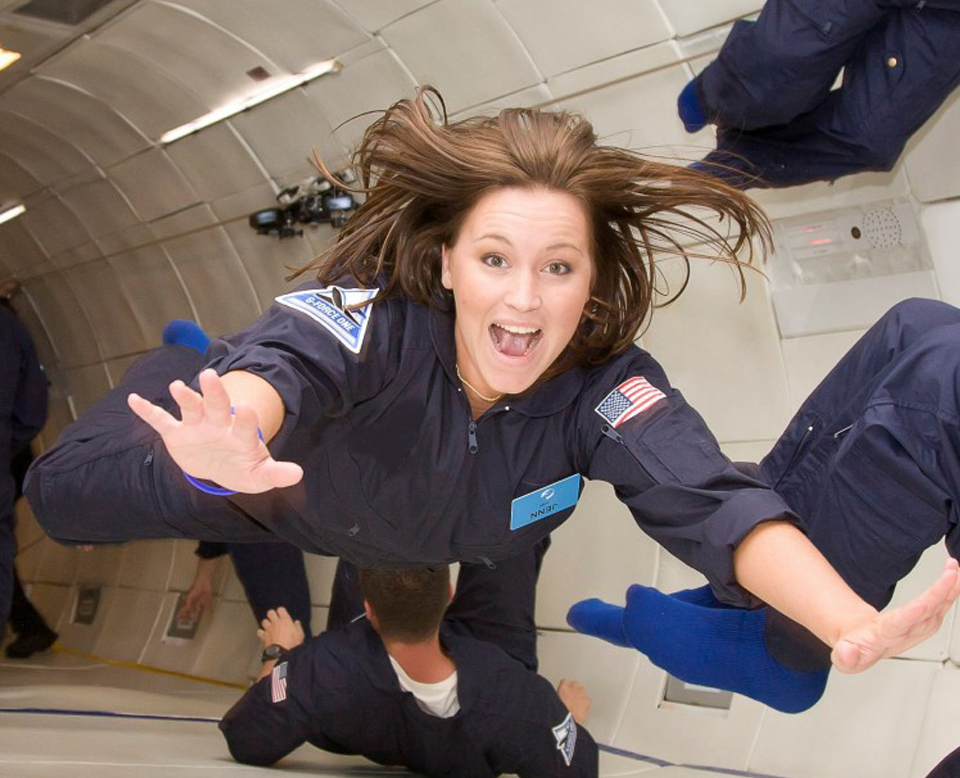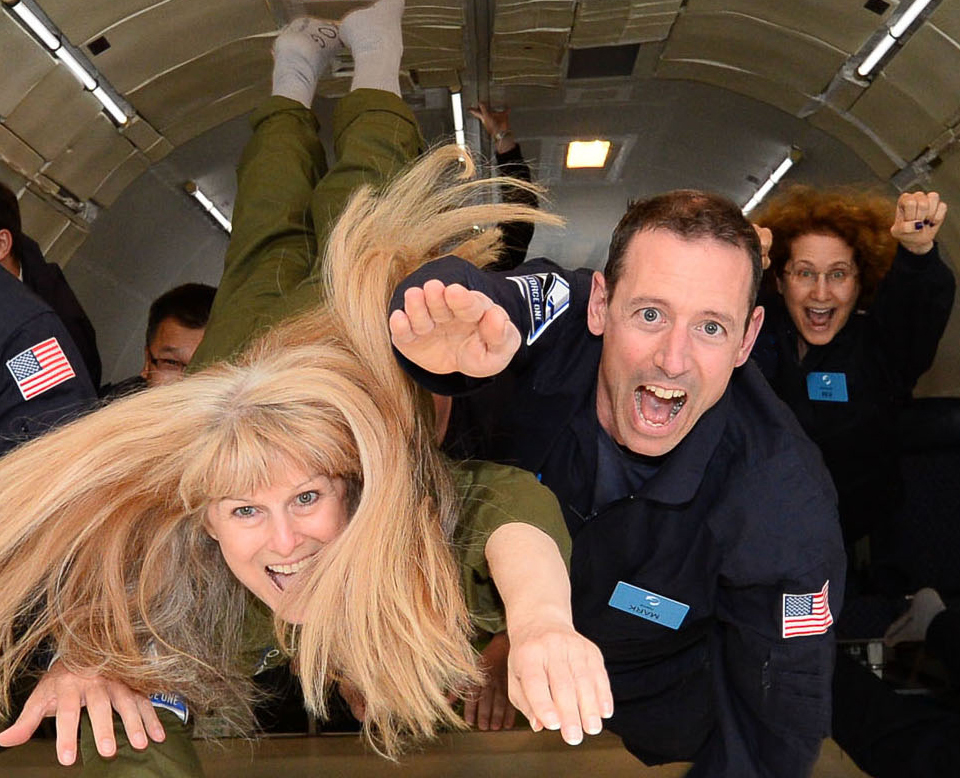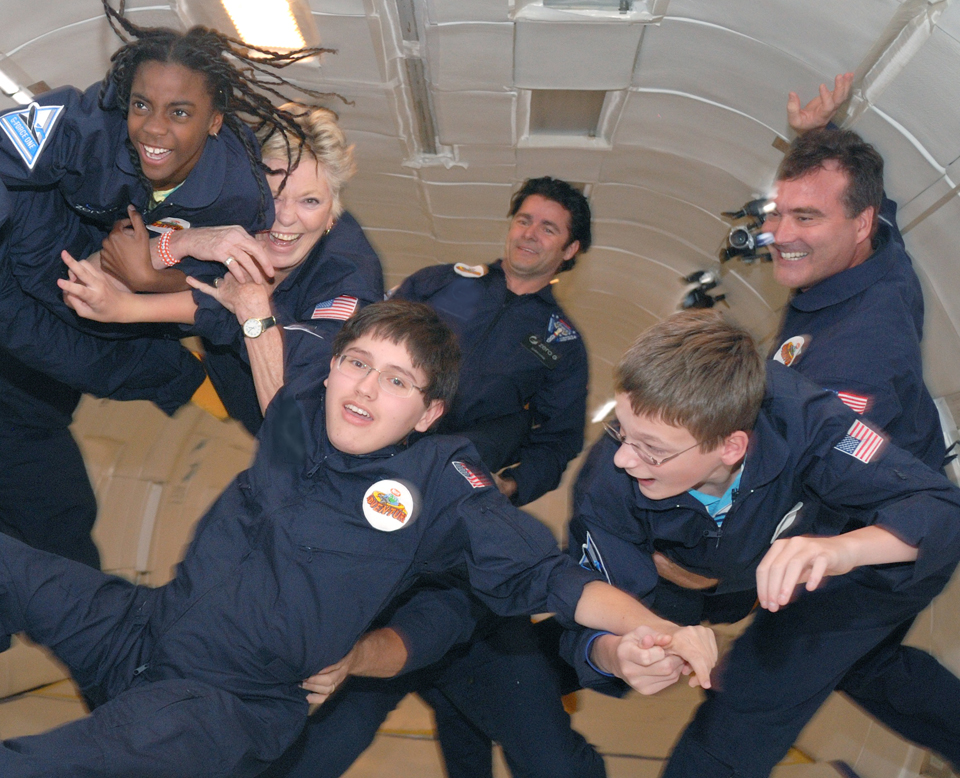G-Flight flies in FAA-designated airspace blocks approximately 100 miles long and ten miles wide. The process starts with the aircraft flying level with the horizon at an altitude of 24,000 feet. The pilots then gradually increase the angle of the aircraft to about 45° relative to the horizon until reaching an altitude of 32,000 feet. During this phase, passengers feel the pull of 1.8 Gs. Next, the plane pushes over the top of the parabolic arc and the zero-gravity phase begins. For the next 20-30 seconds, everything in the plane is weightless.
Finally, the plane gently pulls out of the maneuver, allowing flyers to gradually return to the floor of the aircraft. The maneuver is flown 15 times over the course of the flight, each taking about ten miles of airspace to perform. In addition to zero gravity, flyers aboard G-Flight experience Lunar gravity (one sixth your weight) and Martian gravity (one third your weight), achieved by flying a wider arc over the top of the parabola. On a typical flight, parabolas are flown in sets of three to five, with short periods of level flight between each set.


